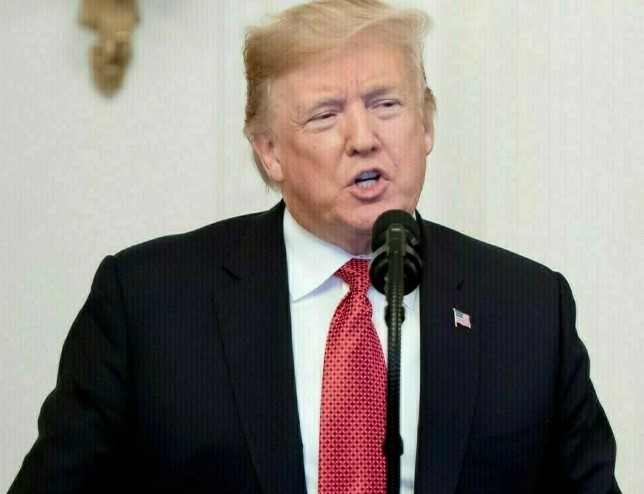Following the recent ceasefire between Israel and Hamas, US President Donald Trump has shifted his attention to the ongoing Russia-Ukraine war. Speaking at a White House dinner event, Trump highlighted that ending the Russia-Ukraine conflict has become his top foreign policy priority. He emphasized that the Gaza ceasefire has opened a pathway for the United States to engage more actively in international conflict resolution.
Trump Eyes Russia-Ukraine Conflict After Gaza Truce
Trump described the Gaza truce as a “progress point” that could help the US leverage diplomatic solutions in other parts of the world. He noted that with the Middle East truce in place, he now wants to focus on bringing Russia and Ukraine to the negotiating table. The Russia-Ukraine war, now nearing its fourth year, remains the largest armed conflict in Europe since World War II.
In his remarks, Trump pointed to the importance of direct diplomacy with Russian President Vladimir Putin. Like his predecessors, he has faced challenges persuading Putin to engage in direct talks with Ukrainian President Volodymyr Zelenskyy. Trump expressed confidence that recent international developments might help in achieving breakthroughs in the Russia-Ukraine conflict.
Hosting Zelenskyy and Weighing Tomahawk Missiles
Trump is scheduled to host Zelenskyy for talks, marking their fourth face-to-face meeting in 2025. Ahead of the visit, he announced that he is considering authorizing the sale of long-range Tomahawk cruise missiles to Ukraine. The weapons system would allow Kyiv to strike deep into Russian territory, giving Ukraine significant leverage in negotiations with Moscow during the ongoing Russia-Ukraine war.
Zelenskyy has long requested access to Tomahawk missiles, believing that these weapons could strengthen Ukraine’s position and encourage Russia to consider peace talks seriously. Trump stated, “He’d like to have Tomahawks. We have a lot of Tomahawks,” signaling his willingness to explore the option.
Providing Tomahawks to Ukraine, however, could provoke strong objections from Russia. President Putin has warned that such a move would cross a red line and could severely strain relations between Moscow and Washington. Despite these risks, Trump appears determined to use the weapons as a diplomatic tool in the Russia-Ukraine war.
US considers sanctions on Rosneft and Lukoil if ceasefire talks with Putin fail
Experts suggest that while Tomahawks could offer strategic advantages, immediate military support might be more effective through other missile systems. Mark Montgomery, an analyst at the Foundation for Defense of Democracies, explained that Extended Range Attack Munition (ERAM) missiles and the Army Tactical Missile System (ATACMS) could deliver operational pressure on Russia more quickly. The United States had already approved the sale of up to 3,350 ERAM missiles to Kyiv earlier in 2025.
The Tomahawk missile, with a range of about 1,600 kilometers, would allow Ukraine to strike targets far deeper into Russian territory compared with the ERAM, which has a range of 460 kilometers, or ATACMS, which reaches up to 300 kilometers. Montgomery noted that while Tomahawks offer political and military impact, shorter-range systems might achieve faster operational results by targeting Russian logistics and command networks near the front lines in the Russia-Ukraine war.
Trump’s 2024 Re-Election Agenda and Russia-Ukraine Diplomacy
Ending both the Gaza conflict and the Russia-Ukraine war has been central to Trump’s 2024 re-election narrative. During the campaign, he repeatedly criticized President Joe Biden’s handling of these crises. Trump framed the conflicts as areas where he could bring decisive leadership and tangible results, highlighting his focus on direct diplomacy and strategic pressure.
In his remarks during the White House dinner, Trump turned to his special envoy Steve Witkoff, who has also served as the chief liaison with Putin, emphasizing the need to prioritize Russia. “First we have to get Russia done. If you don’t mind, Steve, let’s focus on Russia first. All right?” Trump said, underlining his intent to concentrate diplomatic and strategic efforts on ending the Russia-Ukraine war.
Earlier in 2025, during a speech in Jerusalem, Trump linked the Gaza truce to broader US foreign policy objectives. He suggested that the ceasefire could support efforts to normalize relations between Israel and several Middle Eastern neighbors. While the focus of that speech was on the Middle East, Trump made clear that the ongoing Russia-Ukraine conflict remains a major concern.
Trump draws red line — refuses to discuss Ukraine territory in Putin ceasefire talks
By weighing the potential sale of Tomahawk missiles and hosting Zelenskyy, Trump is signaling a willingness to combine diplomatic engagement with military leverage. The approach reflects his broader foreign policy strategy, which seeks to use both negotiations and advanced weaponry as tools to influence outcomes in the Russia-Ukraine war.
The discussions between Trump and Zelenskyy are set against the backdrop of heightened tensions between the US and Russia. The decisions made in the coming weeks regarding missile sales and diplomatic negotiations could significantly impact the dynamics of the Russia-Ukraine conflict.

